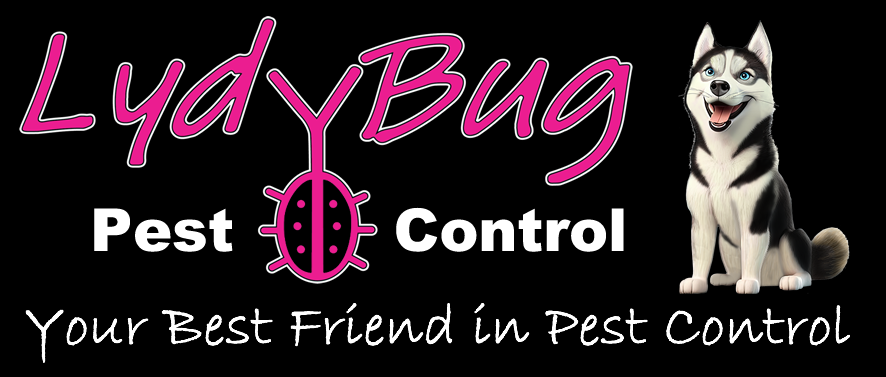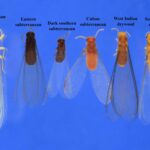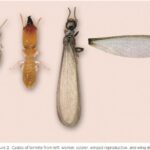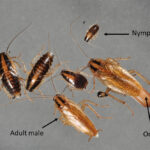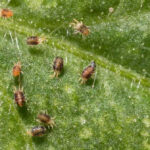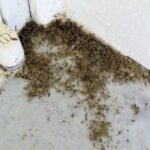Ladybugs are more than just colorful garden guests—they’re nature’s frontline in ladybug pest control. These iconic beetles are crucial for managing pest populations like aphids, making them a vital part of any eco-friendly garden. In this guide, we’ll explore the charming world of ladybugs, their ecological role, and why we should protect them.

The Ladybug’s Aesthetic Appeal
Ladybugs boast a captivating appearance that has captured the imagination of many. Their distinct round shape, small size, and bright hues of red, orange, or yellow, adorned with contrasting black spots, make them instantly recognizable and endearing. The symmetrical patterns on their wings give them an almost whimsical quality, resembling miniature pieces of art crafted by nature.
Diverse Species and Adaptations
Contrary to popular belief, not all ladybugs sport the classic red and black coloration. Ladybugs come in a myriad of hues, from yellow and orange to even shades of pink and black. Their colors often serve as a warning to predators, indicating their toxicity or bad taste—a form of defense known as aposematism.
Additionally, ladybugs exhibit remarkable adaptations, such as the ability to secrete a foul-tasting fluid from their leg joints, deterring predators from consuming them. Some species even play dead to evade danger, showcasing their clever survival strategies.

The Ecological Role of Ladybugs
Beyond their aesthetic appeal, ladybugs play a vital role in maintaining ecosystem health. They are voracious predators, primarily feeding on aphids, mites, and other tiny pests that can wreak havoc on plants. This makes them a valuable asset in agriculture, as they act as natural pest controllers, reducing the need for harmful pesticides.
Farmers and gardeners often welcome ladybugs into their fields and gardens, recognizing their contribution to controlling pest populations. Many even purchase and release them as a natural and eco-friendly method of pest management.
Life Cycle and Behavior
Ladybugs undergo a fascinating life cycle consisting of four stages: egg, larva, pupa, and adult. The eggs are typically laid near colonies of aphids or other insects, providing an immediate food source for the hatching larvae. The larval stage is marked by an elongated, spiky appearance, and during this phase, they consume large quantities of pests.
As they progress through metamorphosis into adults, ladybugs continue their role as pest controllers while also seeking mates for reproduction. Some species of ladybugs exhibit remarkable migratory behaviors, traveling in swarms to find suitable environments for breeding and feeding.

Cultural Significance and Folklore
Throughout history, ladybugs have held various symbolic meanings across different cultures. In many societies, they are considered a sign of good luck or a harbinger of prosperity and happiness. Folklore and tales often depict ladybugs as symbols of protection, love, and even a signal of impending good weather.
Their positive representation in folklore has led to their endearment in society, often regarded as a sign of good fortune when spotted in gardens or homes.
Conservation Efforts and Threats
Despite their popularity and widespread presence, some species of ladybugs face threats due to habitat loss, pesticide use, and climate change. Conservation efforts aim to protect their natural habitats, raise awareness about their importance in ecosystems, and reduce the use of harmful pesticides that can harm not only ladybugs but also the environments they inhabit.
Learn more about our general pest control services
You may also like: Signs You Need an Ant Exterminator
Final Thoughts
Ladybugs, with their captivating appearance and essential ecological role, are truly remarkable creatures. Beyond their charming demeanor lies a world of resilience, adaptation, and ecological significance. Understanding and appreciating these tiny marvels can lead to a greater appreciation for the delicate balance of nature and the importance of preserving it for future generations to cherish and enjoy.
As we marvel at these delightful insects, let us also strive to protect their habitats and ensure their continued presence in our world—a world made brighter by the presence of these fascinating little beetles. Here at LydyBug Pest Control we strive to protect our pollinators and creation’s endearing pest control operator, the ladybug. Contact us today to help you out with any nuisance pest, rodent or termite problem today.

